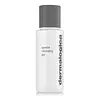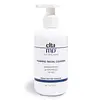What's inside
What's inside
 Key Ingredients
Key Ingredients

 Benefits
Benefits

 Concerns
Concerns

 Ingredients Side-by-side
Ingredients Side-by-side

Water
Skin ConditioningSodium C14-16 Olefin Sulfonate
CleansingSodium Lauroyl Sarcosinate
CleansingButylene Glycol
HumectantHydroxyethylcellulose
Emulsion StabilisingLavandula Angustifolia Oil
MaskingQuillaja Saponaria Bark Extract
CleansingCitrus Limon Peel Oil
MaskingMelissa Officinalis Leaf Extract
Skin ConditioningCitrus Aurantium Bergamia Fruit Oil
MaskingCymbopogon Nardus Oil
MaskingGlycerin
HumectantCocamidopropyl Betaine
CleansingSodium Cocoamphoacetate
CleansingHydroxyacetophenone
AntioxidantCocamidopropyl Hydroxysultaine
Cleansing1,2-Hexanediol
Skin ConditioningCaprylyl Glycol
EmollientPropanediol
SolventCitric Acid
BufferingO-Cymen-5-Ol
AntimicrobialDisodium EDTA
PPG-5-Ceteth-20
EmulsifyingSodium Hydroxide
BufferingSodium Benzoate
MaskingWater, Sodium C14-16 Olefin Sulfonate, Sodium Lauroyl Sarcosinate, Butylene Glycol, Hydroxyethylcellulose, Lavandula Angustifolia Oil, Quillaja Saponaria Bark Extract, Citrus Limon Peel Oil, Melissa Officinalis Leaf Extract, Citrus Aurantium Bergamia Fruit Oil, Cymbopogon Nardus Oil, Glycerin, Cocamidopropyl Betaine, Sodium Cocoamphoacetate, Hydroxyacetophenone, Cocamidopropyl Hydroxysultaine, 1,2-Hexanediol, Caprylyl Glycol, Propanediol, Citric Acid, O-Cymen-5-Ol, Disodium EDTA, PPG-5-Ceteth-20, Sodium Hydroxide, Sodium Benzoate
Water
Skin ConditioningSodium Cocoyl Glycinate
CleansingAcrylates Copolymer
Methyl Perfluoroisobutyl Ether
SolventMethyl Perfluorobutyl Ether
SolventMagnesium Silicate
AbsorbentSodium Cocoyl Apple Amino Acids
Skin ConditioningBromelain
Skin ConditioningPEG/PPG-14/4 Dimethicone
EmulsifyingPolyhydroxystearic Acid
EmulsifyingIsononyl Isononanoate
EmollientEthylhexyl Isononanoate
EmollientSodium Cocamidopropyl Pg-Dimonium Chloride Phosphate
CleansingPhenoxyethanol
PreservativeSodium Hydroxide
BufferingCapryloyl Glycine
CleansingUndecylenoyl Glycine
CleansingSodium Bisulfite
AntioxidantPropylene Glycol
HumectantMaltodextrin
AbsorbentCoconut Acid
CleansingSodium Chloride
MaskingHexylene Glycol
EmulsifyingTetrasodium Glutamate Diacetate
Parfum
MaskingWater, Sodium Cocoyl Glycinate, Acrylates Copolymer, Methyl Perfluoroisobutyl Ether, Methyl Perfluorobutyl Ether, Magnesium Silicate, Sodium Cocoyl Apple Amino Acids, Bromelain, PEG/PPG-14/4 Dimethicone, Polyhydroxystearic Acid, Isononyl Isononanoate, Ethylhexyl Isononanoate, Sodium Cocamidopropyl Pg-Dimonium Chloride Phosphate, Phenoxyethanol, Sodium Hydroxide, Capryloyl Glycine, Undecylenoyl Glycine, Sodium Bisulfite, Propylene Glycol, Maltodextrin, Coconut Acid, Sodium Chloride, Hexylene Glycol, Tetrasodium Glutamate Diacetate, Parfum
 Reviews
Reviews

Ingredients Explained
These ingredients are found in both products.
Ingredients higher up in an ingredient list are typically present in a larger amount.
Sodium Hydroxide is also known as lye or caustic soda. It is used to adjust the pH of products; many ingredients require a specific pH to be effective.
In small amounts, sodium hydroxide is considered safe to use. However, large amounts may cause chemical burns due to its high alkaline.
Your skin has a natural pH and acid mantle. This acid mantle helps prevent harmful bacteria from breaking through. The acid mantle also helps keep your skin hydrated.
"Alkaline" refers to a high pH level. A low pH level would be considered acidic.
Learn more about Sodium HydroxideWater. It's the most common cosmetic ingredient of all. You'll usually see it at the top of ingredient lists, meaning that it makes up the largest part of the product.
So why is it so popular? Water most often acts as a solvent - this means that it helps dissolve other ingredients into the formulation.
You'll also recognize water as that liquid we all need to stay alive. If you see this, drink a glass of water. Stay hydrated!
Learn more about Water